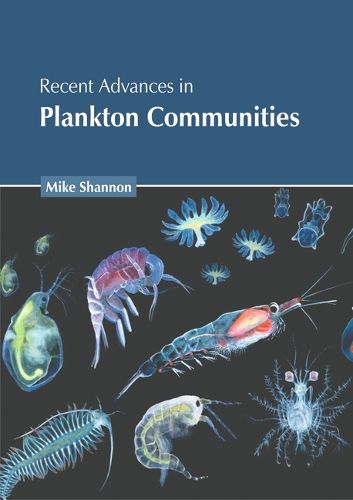Readings Newsletter
Become a Readings Member to make your shopping experience even easier.
Sign in or sign up for free!
You’re not far away from qualifying for FREE standard shipping within Australia
You’ve qualified for FREE standard shipping within Australia
The cart is loading…






Plankton communities are vital components of aquatic ecosystems, comprising a diverse range of organisms that drift in water columns. They are broadly categorized into phytoplankton, which are photosynthetic, and zooplankton, which are heterotrophic. Phytoplankton, including diatoms, dinoflagellates, and cyanobacteria, form the base of the aquatic food web, converting sunlight and nutrients into organic matter through photosynthesis. This primary production supports a variety of marine and freshwater life forms. Zooplankton, such as copepods, krill, and jellyfish, feed on phytoplankton and other small particles, acting as intermediaries in the transfer of energy from primary producers to larger predators like fish and whales. Plankton communities are highly dynamic and influenced by various environmental factors such as temperature, light availability, nutrient concentrations, and water currents. Seasonal changes and climatic events like El Nino can significantly impact their composition and abundance. The health of plankton communities is crucial for maintaining biodiversity and the overall functioning of aquatic ecosystems. They play a significant role in biogeochemical cycles, particularly in carbon sequestration, as phytoplankton absorb atmospheric CO2 during photosynthesis. This book consists of contributions made by international experts. It will provide interesting topics for research, which interested readers can take up. Students, researchers, experts and all associated with plankton community studies will benefit alike from this book.
$9.00 standard shipping within Australia
FREE standard shipping within Australia for orders over $100.00
Express & International shipping calculated at checkout
Plankton communities are vital components of aquatic ecosystems, comprising a diverse range of organisms that drift in water columns. They are broadly categorized into phytoplankton, which are photosynthetic, and zooplankton, which are heterotrophic. Phytoplankton, including diatoms, dinoflagellates, and cyanobacteria, form the base of the aquatic food web, converting sunlight and nutrients into organic matter through photosynthesis. This primary production supports a variety of marine and freshwater life forms. Zooplankton, such as copepods, krill, and jellyfish, feed on phytoplankton and other small particles, acting as intermediaries in the transfer of energy from primary producers to larger predators like fish and whales. Plankton communities are highly dynamic and influenced by various environmental factors such as temperature, light availability, nutrient concentrations, and water currents. Seasonal changes and climatic events like El Nino can significantly impact their composition and abundance. The health of plankton communities is crucial for maintaining biodiversity and the overall functioning of aquatic ecosystems. They play a significant role in biogeochemical cycles, particularly in carbon sequestration, as phytoplankton absorb atmospheric CO2 during photosynthesis. This book consists of contributions made by international experts. It will provide interesting topics for research, which interested readers can take up. Students, researchers, experts and all associated with plankton community studies will benefit alike from this book.